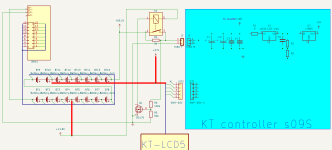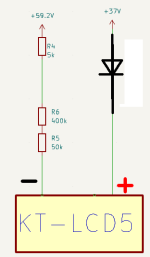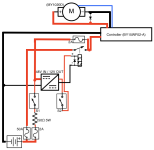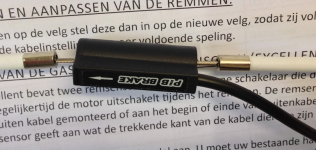Hello.
I recently broke the trunk of my bike where my 48v battery was stored and decided to put the battery in the frame also I added three cells to battery and changed the BMS to 16S.
After reading this post about problems with high voltage. I decided to lower the LCD voltage. After reading this post about problems with high voltage. I decided to lower the LCD voltage. The simplest option that I see is to add two more leads to the battery instead of dc-dc converter fom here
What do you think if this schematic ?

The first pin of the display must be disconnected from the connector and connected to + 37V
mosfet Q1 allow close the relay contacts when the voltage on the controller capacitors reaches approximately 40V (R6/R5 - can adjust the required voltage to open the relay)
I recently broke the trunk of my bike where my 48v battery was stored and decided to put the battery in the frame also I added three cells to battery and changed the BMS to 16S.
After reading this post about problems with high voltage. I decided to lower the LCD voltage. After reading this post about problems with high voltage. I decided to lower the LCD voltage. The simplest option that I see is to add two more leads to the battery instead of dc-dc converter fom here
What do you think if this schematic ?

The first pin of the display must be disconnected from the connector and connected to + 37V
mosfet Q1 allow close the relay contacts when the voltage on the controller capacitors reaches approximately 40V (R6/R5 - can adjust the required voltage to open the relay)








